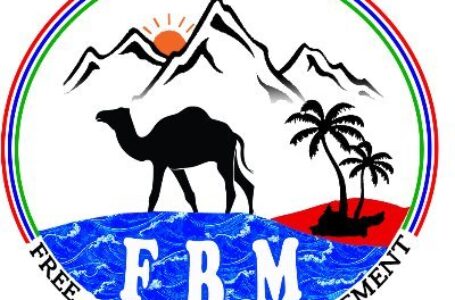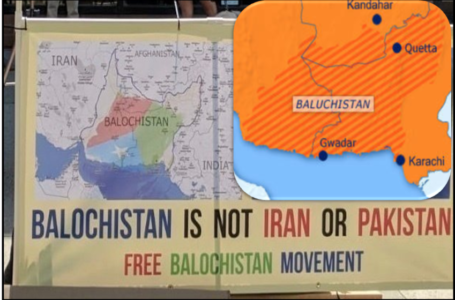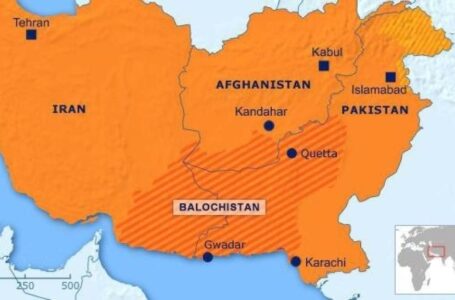FBM Holds Simultaneous Protests Against Pakistan’s Nuclear Tests on Baloch Land
Israel’s Iran documents show nuclear deal ‘was built on lies’
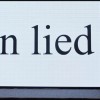
US Secretary of State Mike Pompeo says a landmark nuclear deal with Iran was “built on lies”, after Israel claimed to have proof of a secret Iranian nuclear weapons programme.
Mr Pompeo said documents revealed by Israel’s prime minister were authentic.
Analysts say they show nothing new, highlighting that concerns over Iran’s nuclear ambitions led to the 2015 deal.
US President Donald Trump, who opposes the accord, has until 12 May to decide whether to abandon it or not.
Other Western powers, including signatories Britain and France, say Iran has been abiding by the deal and it should be kept.
Israeli Prime Minister Benjamin Netanyahu on Monday accused Iran of conducting a secret nuclear weapons programme, dubbed Project Amad, and said it had continued to pursue nuclear weapons knowledge after the project was shuttered in 2003.
That followed the revelation in 2002 by an exiled Iranian opposition group that Iran was constructing secret nuclear sites in breach of the nuclear Non-Proliferation Treaty, of which Iran was a signatory.
Mr Netanyahu presented what he said was evidence of thousands of “secret nuclear files” that showed Iran had lied about its nuclear ambitions before the deal was signed in 2015.
Tension between the long-standing enemies has grown steadily since Iran built up its military presence in Syria, which lies to the north-east of Israel.
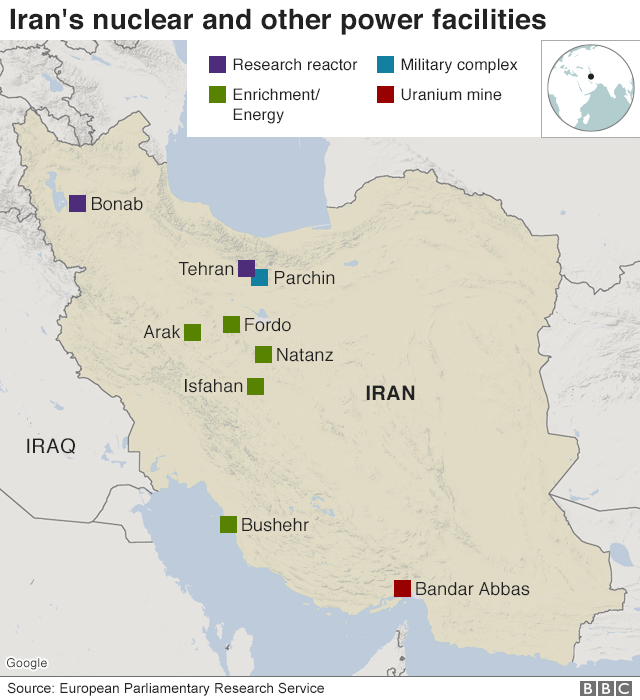
Iran has always denied seeking nuclear weapons, and agreed three years ago to curb its nuclear energy programme in return for the lifting of sanctions.
The Israeli prime minister did not provide evidence that Iran had violated the accord since it went into effect in early 2016. But he insisted that Project Amad had continued at the Iranian defence ministry – citing the head of the programme as saying: “Special activities will be carried out under the title of scientific know-how developments.”
Mr Netanyahu said he had shared the files with the US, and they would be submitted to the International Atomic Energy Agency (IAEA), which has been tasked with investigating Iran’s nuclear past.
What does the US say?
The new secretary of state said the documents were proof “beyond any doubt” that “the Iranian regime was not telling the truth”.
“Iran hid a vast atomic archive from the world and from the IAEA – until today,” Mr Pompeo added.
Mr Trump, who has been vocal about his opposition to the Obama-era deal, said he had viewed part of Mr Netanyahu’s presentation and said the situation was “not acceptable”.
He said he would make a decision on whether to retain the deal in the next 12 days.
What other reaction has there been?
Iran’s Foreign Minister Javad Zarif said the move by Mr Netanyahu was a stunt to influence Mr Trump’s decision on whether the US should stick with the nuclear deal.
He said the documents were a rehash of old allegations already dealt with by the IAEA. A former chief inspector at the agency told the Guardian newspaper his department had seen some of the documentation presented by the Israeli prime minister as early as 2005.
Olli Heinonen told the newspaper his department had come to the conclusion that evidence of Project Amad was credible, but that substantial work on it had ceased in 2003.
A spokesman for the UK government, a signatory of the deal, said it would continue to back the deal, adding: “We have never been naive about Iran and its nuclear intentions.”
Rob Malley, who was on the Iran negotiating team under the Obama administration, played down the allegations, saying they were “nothing new”.
Meanwhile, the European Union’s foreign policy chief, Federica Mogherini, said the documents have not put into question Iran’s compliance with the 2015 deal and said they should be analysed by the IAEA.
How did Israel acquire the documents?
Benjamin Netanyahu told reporters on Monday that Israel’s intelligence agency Mossad had obtained 55,000 pages of evidence and a further 55,000 files on 183 CDs relating to Project Amad.
A senior Israeli official told the New York Times that the agency first discovered the warehouse in southern Tehran in February 2016, and put the building under surveillance.
In January, intelligence agents managed to break into the property in the middle of the night, remove the original documents and smuggle them back into Israel the same night, the official told the paper.
How is the 2015 deal meant to work?
The agreement signed between Iran, the US, China, Russia, Germany, France and Britain lifted crippling economic sanctions in return for curbs on Tehran’s nuclear programme.
Under the deal, officially known as the Joint Comprehensive Plan of Action (JCPOA), Iran is committed to slashing the number of its centrifuges, which are machines used to enrich uranium.
It is also meant to cut its stockpile of enriched uranium drastically and not enrich remaining uranium to the level needed to produce nuclear weapons.
The number of centrifuges installed at Iran’s Natanz and Fordo sites was cut drastically soon after the deal while tonnes of low-enriched uranium were shipped to Russia.
Furthermore, monitors from the IAEA have been able to carry out snap inspections at Iranian nuclear sites.
Why is Trump unhappy about it?
The US president has not held back in voicing his opposition to the deal, which he has described as the “worst ever”.
He has twice already refused to certify to Congress that Iran is complying with the agreement, and warned that the US would withdraw completely on 12 May – the next deadline for waiving sanctions – unless European signatories to the deal and Congress addressed his concerns.
He is unhappy that it only limited Iran’s nuclear activities for a fixed period and had failed to stop the development of ballistic missiles.
He also said it had handed Iran a $100bn (£72bn) windfall that it used “as a slush fund for weapons, terror, and oppression” across the Middle East.
Source: BBC News

